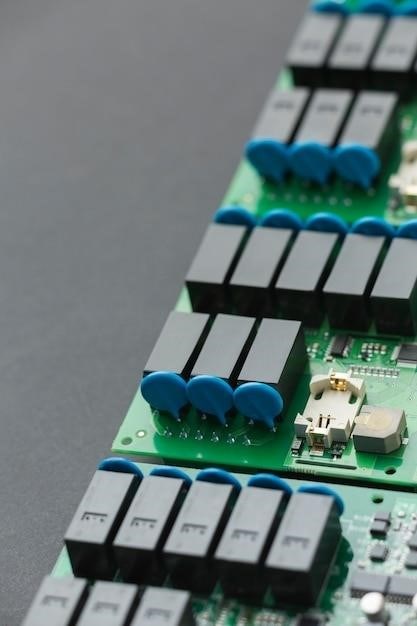APC Smart-UPS 2200 User Manual
This manual provides instructions on how to install, operate, and maintain your APC Smart-UPS 2200. It covers topics such as positioning the UPS, connecting equipment and power, using the front display panel, battery operation, and user-configurable items. This information will help you get the most out of your APC Smart-UPS 2200 and ensure its long-term performance.
Introduction
Welcome to the world of reliable power protection with the APC Smart-UPS 2200! This user manual serves as your comprehensive guide to understanding and maximizing the capabilities of your UPS. The APC Smart-UPS 2200 is a robust and efficient uninterruptible power supply designed to safeguard your critical devices from power outages and surges, ensuring continuous operation and data integrity.
This manual will walk you through the entire lifecycle of your UPS, from initial installation and setup to ongoing maintenance and troubleshooting. We’ll cover essential aspects like connecting your equipment, navigating the front display panel, and understanding battery operation. Additionally, we’ll delve into user-configurable items, allowing you to tailor your UPS to meet your specific needs.
Whether you’re a seasoned IT professional or a home user seeking peace of mind, this manual empowers you to confidently manage and utilize your APC Smart-UPS 2200. We encourage you to carefully read through each section, as it will provide you with the knowledge and expertise to harness the full potential of your power protection solution.
By understanding the features and functionality of your APC Smart-UPS 2200, you’ll be equipped to protect your valuable equipment and ensure uninterrupted operation during power fluctuations and outages. This manual is your key to unlocking the power of reliable power protection with the APC Smart-UPS 2200.
Installation
Installing your APC Smart-UPS 2200 is a straightforward process that ensures you’re ready to enjoy reliable power protection. Before you begin, make sure you have all the necessary components, including the UPS itself, power cords, and any connecting cables for your equipment. It’s also essential to familiarize yourself with the included user manual for detailed instructions and safety precautions.
The first step involves carefully selecting a suitable location for your UPS. Choose a well-ventilated area, away from direct sunlight and heat sources, to ensure optimal performance and longevity. The UPS should be placed on a flat, stable surface that can support its weight. Once you’ve chosen the location, you can proceed to connect the UPS to your electrical outlet using the provided power cord.
Next, you’ll connect your critical equipment to the UPS using the appropriate cables. The APC Smart-UPS 2200 is equipped with various output connections, including standard power outlets, USB ports, and potentially network connections, depending on the model. Consult the user manual to ensure you’re using the correct cables and ports for your specific equipment.
After connecting your equipment, it’s recommended to run a quick test to ensure everything is functioning properly. This involves simulating a power outage by briefly disconnecting the UPS from the main power source. The UPS should seamlessly switch to battery power, maintaining a stable supply to your connected devices.
Once you’ve successfully completed the installation process, you can confidently rely on your APC Smart-UPS 2200 to provide uninterrupted power protection for your critical equipment, ensuring business continuity and peace of mind.
Position the UPS
Choosing the right position for your APC Smart-UPS 2200 is crucial for its optimal performance, safety, and longevity. The ideal location should be well-ventilated, away from direct sunlight and heat sources, such as radiators or direct sunlight. Exposure to extreme temperatures can negatively impact battery life and overall performance.
The UPS should be placed on a flat, stable surface that can support its weight. Avoid placing it on uneven surfaces or near unstable objects that could potentially cause it to fall. Ensure the area around the UPS is clear of any obstructions, allowing for adequate airflow and preventing accidental damage.
Consider the proximity of your critical equipment when positioning the UPS. Ideally, the UPS should be located close to the devices it’s protecting to minimize cable length and potential voltage drop. However, ensure that the UPS is not positioned directly on top of sensitive equipment, as it may generate some heat during operation.
If you’re installing the UPS in a rack, make sure the rack is sturdy and properly secured. Follow the manufacturer’s guidelines for mounting the UPS in the rack to ensure proper ventilation and stability. Additionally, consider the weight of the UPS and ensure the rack can support its weight.
Remember to consult the user manual for specific recommendations regarding the positioning of your APC Smart-UPS 2200. By following these guidelines, you can ensure that your UPS is installed in a safe and optimal location, maximizing its performance and protecting your valuable equipment.
Connect Equipment and Power to the UPS
Connecting your equipment and power source to the APC Smart-UPS 2200 is a straightforward process. However, it’s essential to follow the correct steps to ensure safety and proper operation. Firstly, unplug all devices from the power outlets you plan to use for the UPS. This prevents accidental electrical shocks during the connection process.
Locate the rear panel of the UPS, where you’ll find the input and output connections. The input connector is typically labeled “Line” or “Input,” and it’s where you connect the power cord from your main power source. Connect the power cord to the input connector, making sure it’s securely fastened.

Next, identify the output connectors on the UPS. These are usually labeled with numbers or letters corresponding to the different outlets on the UPS. Connect the power cords from your devices to the corresponding output connectors on the UPS. Ensure each cord is securely plugged in to avoid loose connections.

Once all devices are connected, plug the power cord from the UPS into the main power outlet. The UPS will now be receiving power from the main power source. You can then switch on the UPS by pressing the power button located on the front panel. The UPS should now be supplying power to your connected devices.
Refer to the user manual for specific instructions regarding the connection process for your APC Smart-UPS 2200. It may provide additional information about the different types of connectors available, recommended cable lengths, and any other specific precautions. By following these steps carefully, you’ll ensure a safe and secure connection for your UPS and connected devices.
Rear Panels
The rear panels of the APC Smart-UPS 2200 are crucial for connecting power and equipment to the UPS. Understanding the components and their functionalities is essential for safe and efficient operation. The rear panel typically houses the input and output connectors, along with various other features depending on the specific model;
The input connector, usually labeled “Line” or “Input,” is where you connect the power cord from your main power source. This connector allows the UPS to receive power from the utility grid. The output connectors, typically labeled with numbers or letters, are where you connect the power cords from your devices, providing backup power during an outage.
The rear panel may also feature a fuse holder. The fuse protects the UPS from excessive current, preventing damage in case of a short circuit or overload. Additionally, you may find a battery connection point, allowing for the connection of external batteries to extend the UPS’s runtime.
Some models may also include a serial port for remote management and monitoring of the UPS. The serial port allows for communication with the UPS using a computer or other external device. Other features might include an RJ-45 connector for network management, allowing you to monitor and control the UPS remotely.
Always refer to the user manual for your specific APC Smart-UPS 2200 model to understand the layout of the rear panel and the functionalities of each component. Proper understanding of these components ensures safe and efficient operation of your UPS.
Basic Connectors
The APC Smart-UPS 2200 features a variety of connectors on its rear panel, designed for both input and output connections. These connectors are essential for providing power to the UPS and distributing it to your connected devices. Understanding the types and functionalities of these connectors is crucial for safe and efficient operation of your UPS.
The most common connector type is the IEC 320 C13 input connector, typically found on most UPS models. This connector accepts the power cord from your main power source, allowing the UPS to receive electricity from the utility grid. The output connectors usually consist of IEC 320 C14 sockets, providing standard power outlets for connecting your devices. These sockets are designed to accommodate various devices, including computers, monitors, and other electronic equipment.
Some models may also include additional connector types, such as USB ports for remote management and data logging. These USB ports allow you to connect the UPS to a computer for monitoring and configuration. The USB interface can be used to monitor the UPS’s status, configure settings, and even shut down your computer in case of a power outage.
Other connectors might include a serial port for communication with the UPS using a computer or other external device. The serial port allows for remote management and monitoring of the UPS, providing detailed information about its status and performance.
Always consult the user manual for your specific APC Smart-UPS 2200 model to identify the connectors present and their specific functionalities. Understanding the types and purposes of these connectors will ensure that you connect your devices correctly and safely, maximizing the benefits of your UPS.
Operation
The APC Smart-UPS 2200 operates seamlessly, providing reliable power protection for your connected devices. When the UPS is plugged in and powered on, it constantly monitors the incoming power from the utility grid. If the power remains stable, the UPS acts as a standard power source, supplying clean and regulated electricity to your devices. However, in the event of a power outage or fluctuation, the UPS’s internal battery kicks in, providing uninterrupted power to your equipment. This seamless transition ensures that your devices continue to operate without interruption, preventing data loss and system crashes.
The UPS’s internal battery provides backup power for a predetermined duration, depending on the load connected to it. During this battery operation, the UPS’s front display panel will illuminate, indicating battery usage. The display panel also provides real-time information about the UPS’s status, including battery charge level, voltage, and output load. This information is crucial for monitoring the UPS’s performance and ensuring that your devices are adequately protected.
The APC Smart-UPS 2200 also features automatic voltage regulation (AVR), which helps to stabilize the incoming power supply. AVR provides protection against minor voltage fluctuations, ensuring that your devices receive clean and stable power. This feature is particularly useful in areas where the power supply is prone to voltage variations.
During battery operation, the UPS may automatically shut down your connected devices to conserve battery life and ensure a safe and orderly shutdown. This feature is particularly important for computers and servers, as it prevents data corruption and system instability during a power outage.
Understanding the operation of your APC Smart-UPS 2200 is essential for using it effectively. By monitoring the UPS’s status, you can ensure that your devices are adequately protected and that you have enough backup time in case of a power outage.
Front Display Panel
The front display panel of your APC Smart-UPS 2200 serves as a crucial communication hub, providing real-time information about the UPS’s status and performance. This panel is designed to be user-friendly and intuitive, offering clear and concise information at a glance. The display panel features various indicators and symbols that convey vital information, enabling you to monitor the UPS’s operation effectively.
One of the key indicators on the display panel is the battery charge level. This indicator visually represents the remaining battery capacity, allowing you to assess the available backup time. If the battery charge is low, the display panel will alert you, prompting you to take appropriate actions. Another important indicator is the output load, which displays the current power consumption of the devices connected to the UPS. This information helps you understand the UPS’s load capacity and ensures that you don’t overload the system.
In addition to battery charge and output load, the display panel also provides information about the UPS’s power source. It indicates whether the UPS is currently operating on utility power or battery power. This information is vital for understanding the UPS’s current status and whether it is providing backup power. The display panel also features indicators for various alarms and events, such as low battery, overload, and system faults. These alarms alert you to potential problems, enabling you to address them promptly and avoid system downtime.
The front display panel of your APC Smart-UPS 2200 is an essential tool for monitoring the UPS’s operation and ensuring the safety and reliability of your connected devices. By understanding the information displayed on the panel, you can effectively manage the UPS’s performance and prevent potential problems.
Battery Operation
The battery is the heart of your APC Smart-UPS 2200, providing the crucial backup power that keeps your connected devices running during power outages. Understanding how the battery operates is essential for maximizing its lifespan and ensuring reliable backup power. Your APC Smart-UPS 2200 is equipped with a high-quality sealed lead-acid battery designed for long-term performance and reliability. The battery is constantly being charged by the UPS, ensuring it’s ready to provide power when needed.
When a power outage occurs, the UPS automatically switches to battery power, seamlessly maintaining power to your connected devices. The battery provides a specific amount of backup time, depending on the load connected to the UPS. The front display panel provides a visual indication of the battery charge level, allowing you to monitor the remaining backup time. The battery’s lifespan can be affected by factors like temperature, load, and charging cycles. To optimize battery performance, it’s important to maintain a cool and dry environment for the UPS and avoid overloading the system.
Regular battery maintenance is crucial for ensuring optimal performance and extending the battery’s lifespan. APC recommends that you perform battery tests periodically to assess the battery’s health. These tests can be conducted using the UPS’s built-in self-test function or by using a dedicated battery tester. If the battery test results indicate a decline in performance, it’s advisable to replace the battery to maintain reliable backup power. By following these guidelines, you can ensure your APC Smart-UPS 2200’s battery operates efficiently and provides the necessary backup power to protect your critical devices during power outages.





